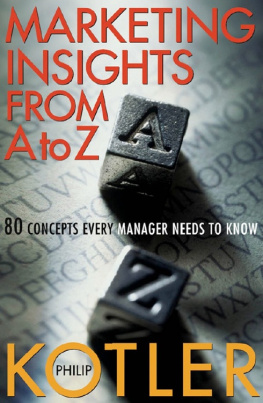.
Copyright 2012 John F Ellett
All rights reserved.
ISBN-10: 1478229225
EAN-13: 9781478229223
eBook ISBN: 978-1-62345-232-2
Library of Congress Control Number: 2012912643
CreateSpace, North Charleston, SC
.
TABLE OF CONTENTS
.
C ongratulations! As a marketing leader embarking on a new mission this is an exciting time for you, one full of anticipation, excitement and, if you are like most of your peers, anxiety. You may be an experienced CMO taking on a new challenge, a first-time CMO who is ready to rise to the occasion or an aspiring CMO who wants to achieve career-accelerating success in your new position. You may be joining a new company or being promoted within your current firm. Whatever your circumstance, you want to get off to a fast start in your role and you know the first 100 days will be critical. You want to make great first impressions and you want to deliver on the expectations of the people who put you in your role.
This period is your unique window of opportunity to be the newbie, to ask basic (yet insightful) questions, to challenge existing assumptions, to focus more on inputs than outputs and to take time simply to get to know other people in your organization. But that window wont be open for long. So how do you prioritize your activities to make the most of this unique period? You know the trajectory of your success will be established early in your tenure, so how can you accelerate your success, and that of your organization, through your initial actions?
These are the questions I have helped marketing executives answer over the years. Id been in their shoes, had worked with many execs like them and had my own point of view, and yet I was curious to know if there was a best practices approach that I should be recommending. I set out to see if I could deduce an approach by talking with over 50 CMOs and senior marketing executives about what they did in their first 100 days. As they told me what worked well and what they would like to do over, clear themes and patterns emerged. Those themes became the inspiration for the manifesto and the patterns became the structure for this book.
The overriding theme is that, as a new CMO (or marketing leader with another title), you have been hired to be a change agent. In some companies that means dramatic and disruptive change, impacting brand strategy, product plans, channel partners and communications programs. In others that means sustained and incremental change, focusing on executional improvements within the marketing organization. In all cases the changes impact strategy, execution, organizational structure, people, processes and systems. My research reinforced what you must already know: Your new assignment is not one dimensional. That is why the manifesto addresses so many facets of your role as change agent.
The patterns that emerged fall into three phases. The first is a preparation phase. It begins in the interview process and usually lasts about 30 days after starting the new job. It starts with getting clarity about the magnitude and pace of change your organization needs and what your executive team will support. Its followed by you translating those expectations into your agenda. It is important to distinguish your agenda from your strategy. While you are expected to show up with an idea of how you will solve the challenge you have been given, it is not wise to declare the answer on Day One. The strategy will follow in the next phase, but youll need a clear agenda at the outset. Youll also need to build relationships with your executive peers and other key members of the company who will be important when it comes time to execute your eventual strategy. As with any leader of change initiatives, enrolling others in the process along the journey will make implementing your recommended changes easier when the time for action comes. Moving too fast and ignoring the human dynamics of change was a commonly requested do-over from several of the CMOs with whom I talked. Finally, youll need to get the insights that will inform your strategy. These include voice of the customer insights, key market trends, competitive strengths and weaknesses and insights from within your own firm. Armed with clear expectations, a solid agenda, strong relationships and actionable insights, you can focus on the second phase of the process, the planning phase.
During this phase youll develop your strategy, determine your organizational structure, make changes to your team roster and establish new processes by which the team will operate. These are the issues at the heart of your new role and you will want to address each of these carefully. The critical decisions you make in these four areas will ultimately impact your success. While you will be drawn quickly into day-to-day decisions assigned to your role, maintaining focus on the big picture decisions is essential. Which is why getting clarity on the pace of change is so critical in phase one. If you take too long to formalize the decisions around strategy and organization you may be viewed as a weak and ineffective leader, which will undermine your credibility. Conversely, if you act with too much haste before you have a clear picture, a sound strategy and organizational allies, you may be unsuccessful in the long run. Each situation is different, so make sure you get aligned with your boss and peers on the pacing of these decisions. For some CMOs all four of these areas were addressed in their first 100 days. For others it took six months given the culture and complexity of their companies. While the timing of this phase will vary, the sequence rarely does. The order strategy, structure, people and process is consistent and provides a framework around which you can order your key decisions. Once you have addressed these areas you can begin focusing on executing your strategy, the final phase of the process.
To execute your strategy youll need a detailed action plan with responsible parties assigned to every activity. Youll want a measurement framework to assess progress toward your goals and to provide feedback for ongoing course correction and program optimization. Youll need technology-based systems to engage with your customers and partners and to improve the efficiency and effectiveness of your activities. And youll need the executional agility to adjust your plans and programs based on the dynamic market and competitive environments within which you operate. These aspects of the last phase will likely extend beyond your first 100 days. Addressing each during your window of opportunity will enhance your ongoing effectiveness as a marketing leader.
Best of luck in your new opportunity. I hope the insights gleaned from other CMOs and shared on the following pages of this book will provide reassurance of your own instincts and possibly add a few new tools to your bag of tricks.
.
T his book would not have been possible without the insights of CMOs and other marketing leaders who were generous with their time and gracious enough to introduce me to people I did not know. Some are quoted in the book, others are not, yet each person I talked with contributed something that shaped the structure and contents of the book.
Trying to write a book and run a company at the same time can be quite a challenge. I could not have undertaken this project without the support of the team at nFusion especially my partners Tom Martin and Jay Watson and my executive staff Anne Spradley, Bill Parkes, Nikki Hickman and Bass Phillips.
As a rookie author, I could not have completed this manuscript without Britton Manasco who translated my ideas into an initial draft, Robi Polgar who edited my writing, Brad Langford who produced the graphics and Khoa Le who designed the cover.

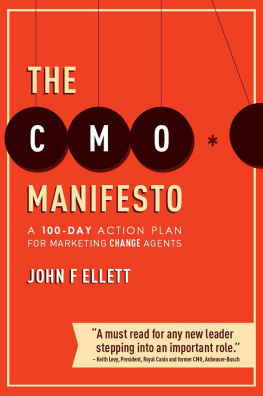
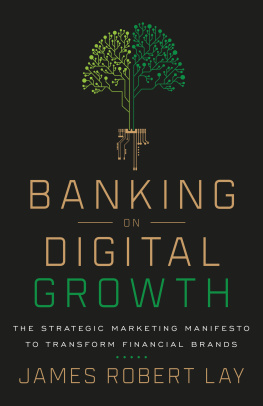
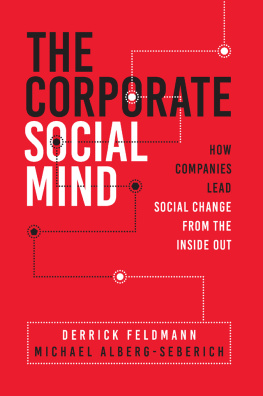



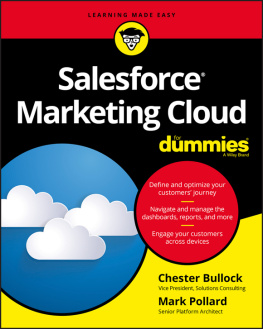

![Heather Fitzpatrick [Heather Fitzpatrick] - Marketing Management For Non-Marketing Managers](/uploads/posts/book/124049/thumbs/heather-fitzpatrick-heather-fitzpatrick.jpg)
